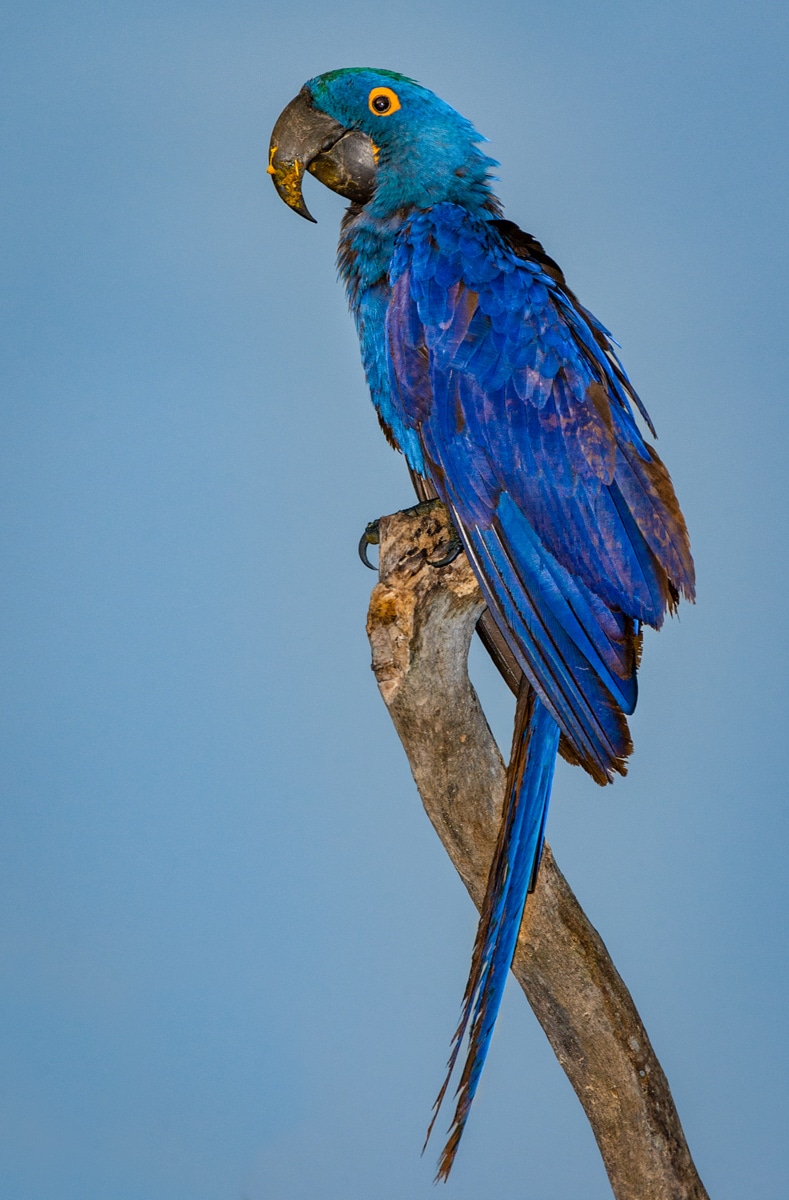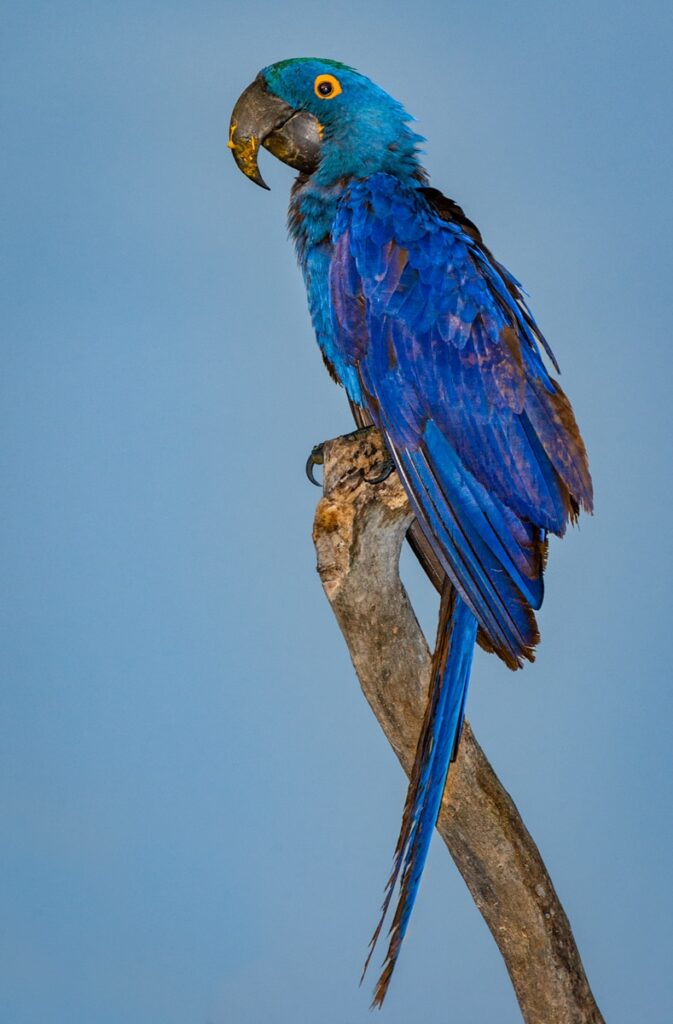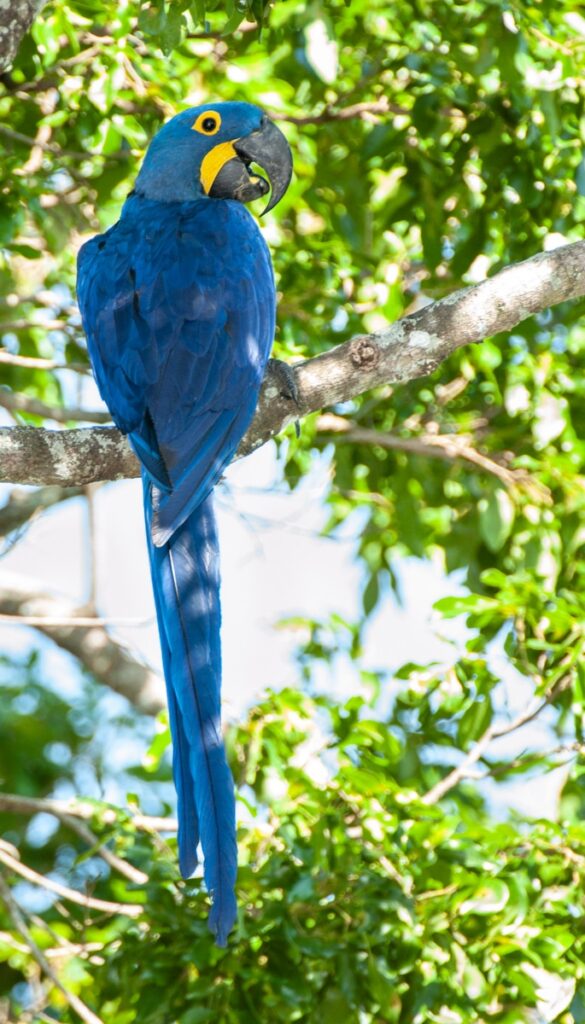
Macaws are a group of parrots whose numbers include the rarest birds in the world, and even those species that are currently listed as “Least Concern” by the IUCN are decreasing in the wild. But one species that has been classed as extinct in the wild for 20 years was recently given a new lease of life.

The Bluest Blue
The Hyacinth macaw is the largest living parrot species in the world, measuring 1 meter or 40 inches from the tip of its tail to the top of its head. The stunning bright blue plumage, distinct yellow eye ring, and wide yellow crescent on the bill of this bird make it one of the most sought after by private collectors. Living among the semi-open wooded habitats of central and eastern South America, habitat loss for agriculture and trapping for the illegal wild bird trade have led to this beautiful parrot being listed as Vulnerable. It is thought there are more in private ownership than there are remaining in the wild: 10,000 in captivity as opposed to 6,500 flying free. Now protected by the multilateral treaty CITES banning commercial export, they are the focus of several conservation programs, like the Hyacinth Macaw Project in Mato Grosso do Sul. Artificial nests placed in territory not transformed by cattle ranching and other developments have led to slow but encouraging signs of recovery. Replanting programs of native food trees and education among communities about their potential value for ecotourism are making headway at long last.

When Wrong Can Make a Right
The very practice that contributes to some of the dangerously low populations we now see today can, ironically, also play a role in their recovery, as illustrated by the news about another blue parrot. The Spix’s macaw is a stunning blue-gray bird with a snowy-white face, who also bears the woeful title of the world’s rarest parrot. They were declared extinct after an attempt to save them in 1995 failed when an introduced female to the last known male in the wild died after allegedly colliding with a power line, and the male vanished from Brazil’s Curacá region five years later: another species gone. But now the culmination of years of conservation efforts across nations, at times overshadowed by infighting and controversy, will finally see the macaws gradually reintroduced into the wild. In a facility in Tasdorf, Germany, Spix’s macaws obtained from private collections across the globe were cared for and then selectively bred to strengthen the bloodline – as a population dwindles, so does genetic diversity. Collectors agreed to surrender the birds after reassurances of no questions asked as to how they came by them. In March 2020, 52 of those 170 macaws were flown from Berlin to a purpose-built facility in the midst of the Bahia state of Brazil. A year later, three chicks hatched, the firstborn in the region for 30 years. As part of a gradual reintroduction of the species to the wild, in June 2022, some of those birds took their first wingbeats in the open air of the Caatinga, the “white forests” of north-eastern Brazil. Others will be released later in the year and then, it is hoped, for years to come.

A Chance to Thrive Among Friends
Releasing highly social species like macaws into the wild is best done in a larger group that can work together to spot predators, find food, and eventually a mate. These Spix’s macaws will be reintroduced into stable populations of Illiger macaws who coexist in the same environment; they have similar nesting habitats and diets and it is reasoned this will help the newcomers adapt and thrive in their new freedom in the caatinga. Time will tell, but when faced with absolute extinction, any effort is worth it.


